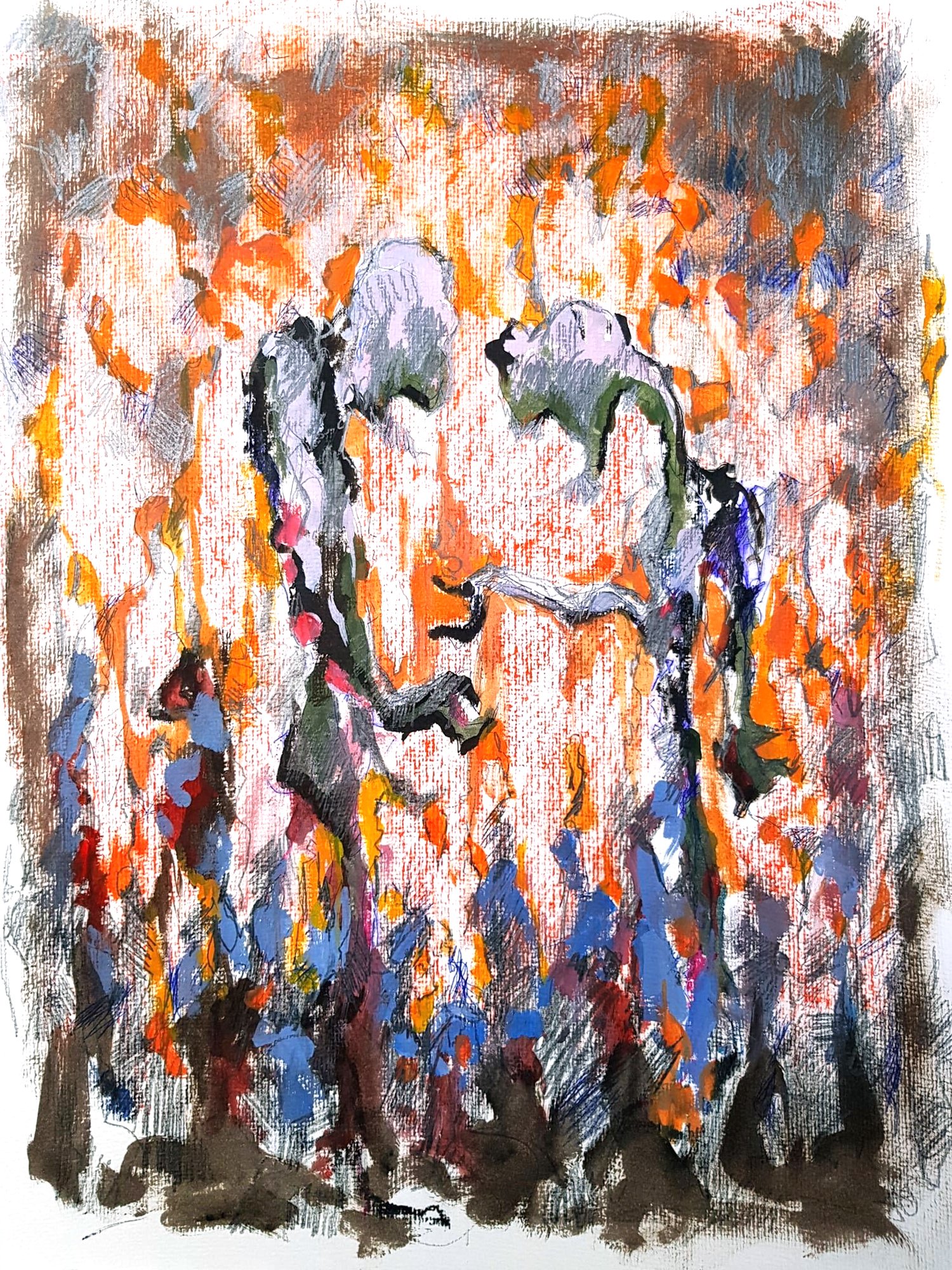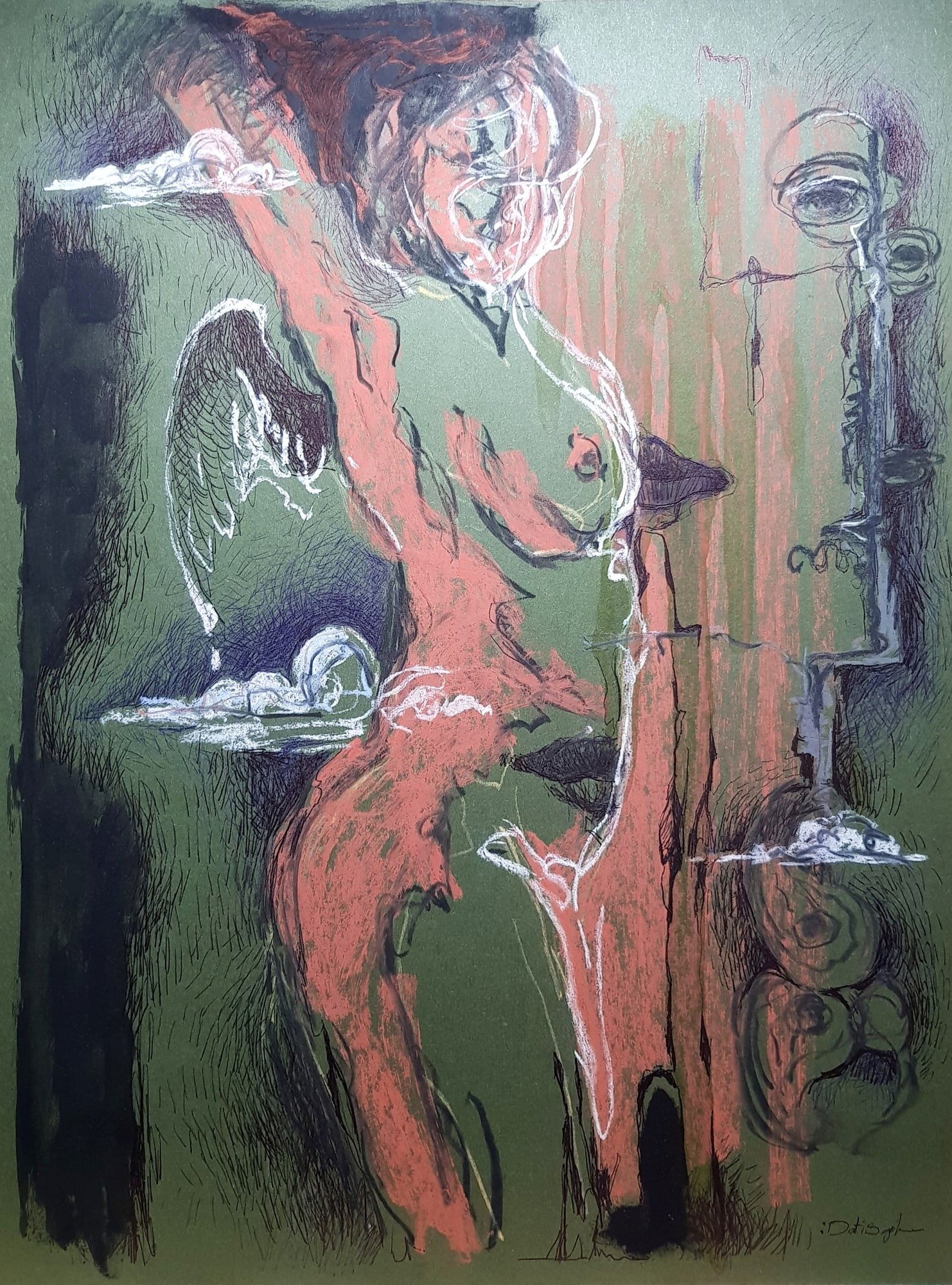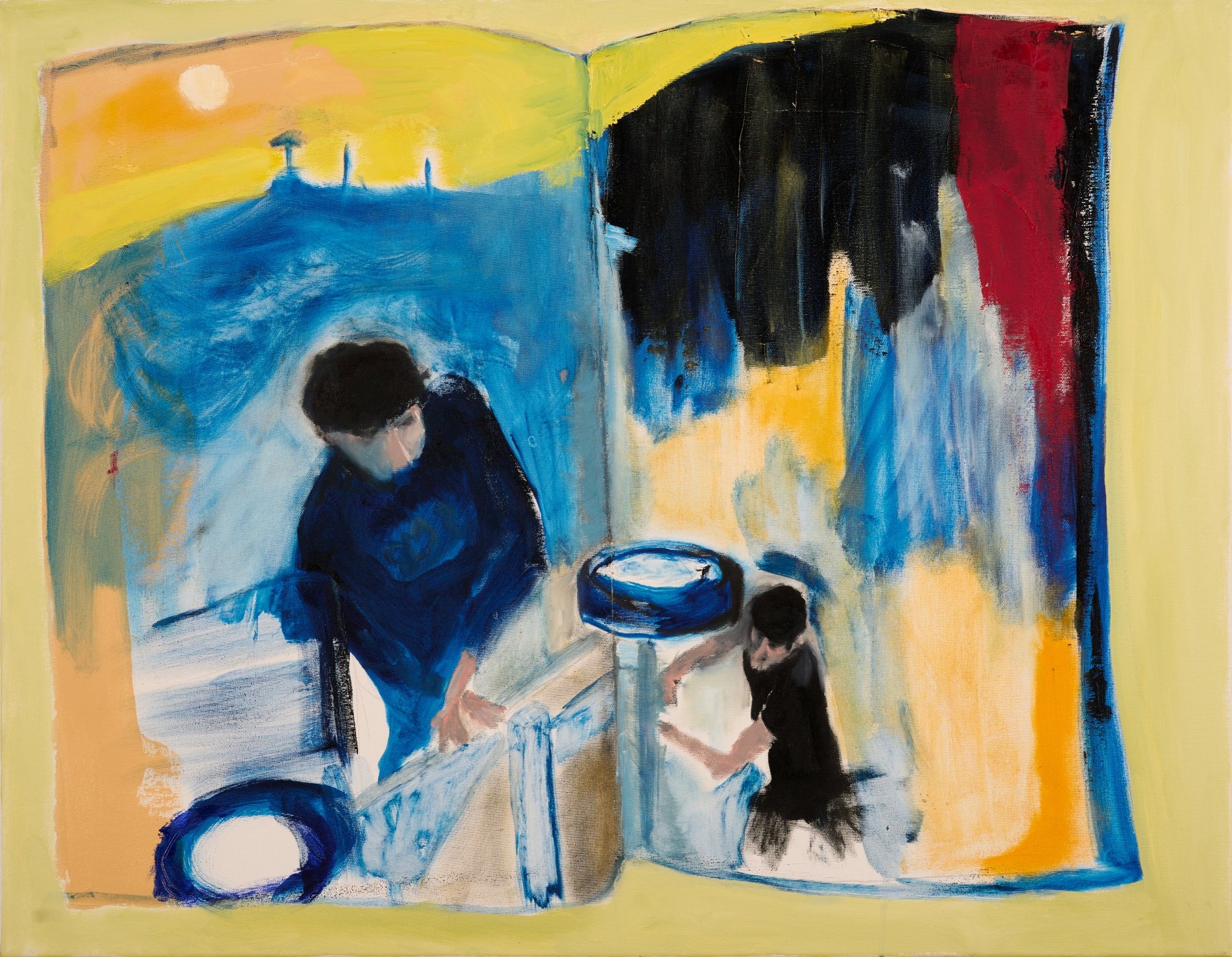10 Questions with Datis Golmakani
Datis Golmakani is an Iranian painter and cartoonist, born in Mashhad, Iran, in 1985, and currently based in Wiesbaden, Germany. He received first place at the Mashhad visual art festival in 2009 and won the International Caricature Festival of Nasredin Hoja, Turkey, in 2013.
Datis Golmakani has participated in many art group exhibitions in Iran, Romania, Slovakia, Belgium, Germany, Poland, Turkey, China, Mexico, just to name a few. He is a member of the Institute for the promotion of visual Arts, a member of BBK artists council in Germany, and the Nasauischer artists council.
Datis Golmakani portrait
ARTIST STATEMENT
What is seen in this collection is the first manifestation of colorful and eerie combinations. The lack of balance and contradiction in the element of opportunity allows him to express emotions, thus creating a personal and subjective space. As an artist, time and place have never affected him, and what's considered important is the commitment to create form and uncertainty in principles. Basically, he's looking for moderation and jumping from romanticism to better understand the depth of content. What is happening around us is not something apart from nature, and we're all part of this earthly nature. Our behaviors and reactions are a part of human nature and can be positive and directed towards the continuation of a more beautiful and healthy life. In the end, the discursive view of freedom and practice and experimental knowledge gave him the opportunity to practice.
© Datis Golmakani
INTERVIEW
First of all, tell us a little more about your background, and how did you begin making art?
That is the recurrent question for which I have no definite answer. Perhaps from my very childhood. A special gift for representing images and surrounding objects can be taken as early tokens. And after that, throughout my studies, I was so emotionally and practically engaged with this field that it never occurred to me to pinpoint any particular starting point. To be honest, luck was not on my side at the time and place of my birth. So, I decided to emigrate from Iran to Germany.
Is there a piece you consider a “breakthrough” in your career?
Some various factors and events can lead to the development of an artist. But I personally was impressed and inspired by everything that was happening around me, my emigration being the most different of them all. I got acquainted with art and tried my hand in various techniques and methods, and after that, I tried to complement it by a climate shift. But if you mean one particular work or a collection of works, I should say that this kind of development always goes hand in hand with time; namely, it is a gradual process that cannot be summarized in one specific work of mine.
© Datis Golmakani
© Datis Golmakani
What is the scope of your work?
My artistic scope is not limited to painting; it encompasses several artistic arenas. At times in group and within others individually, I have been engaged with various materials in different fields such as sculpture, installation art, performance art, music, and mostly caricature, which expanded my mental scope for ideation and subjectivism, and above all, painting. I spent many years painting classically in the realist style but could not find one single meaning for me in any style.
Can you tell us about the process of creating your work? What aspect of your work do you pay particular attention to? Where do you find inspiration for your work?
As far as content is concerned, it is safe to say that time and society have a great impact on every artist in general. To discover and fabricate the mental content and the philosophy behind every behavior and reaction, the obsession with understanding the surrounding issues can be the first step in choosing my personal space or approach. All of these are summed up in one subject and at times in a mere feeling; sometimes, I myself do not know how I begin to work. But as far as technique is concerned, I should admit that when the conscious gets in contact with the unconscious, or when they are mingled, better to say, they both produce the same result. I always loosen my feeling in technique. What passes my mind is shaped into wanted and unwanted forms. Meanwhile, to me, it is important to emphasize and stay committed to the form. The universe has its base in form. In my view, whatever is explained, written, or felt has a form - not the form in the common sense of the term. The movements are rapid, the brushes dance, and colors are born. It may sound poetic, but it is the truth. In the end, the conscious and regularized mind wakes up to judge and correct the defects and shortcomings.
© Datis Golmakani
What do you think about the art community and market?
Throughout history, art has always targeted specific and general audiences. The purchase of the artworks and the audience’s attention cause the development and continuity of art. But if art dealers enter the art world, the values go through a change, the cultural and artistic purposes and discoveries disappear, and the profit of some people becomes all that matters. There is no doubt that an intermediary is needed to exchange artists and their audience and community. But sometimes, these intermediaries can, to some extent, determine or alter the progress and development of an artist, and it is these relations that finally place the level of artists. At times priceless artworks are undervalued, and at others, ordinary works are sold at high prices. It can be said that thanks to the internet and social network, no one is unaware of the news of the art world and the new artworks. As a result, the views and conditions are no more limited, and the buying and selling of the artworks are facilitated, so much so that at times they reach the audience directly through the artists.
Unfortunately, most artworks, especially in painting, are largely based on technique, and a deep content cannot be found in them. Superficial content and technique are what the common audiences are after since they can relate to the façade of the image without delving into the layers of meaning lying underneath it. If you ignore or omit the technique from an artwork, what remains are the content, concept, and idea generated from the artist’s mind. Sometimes artists’ statements can help us form a mental connection and discover what is going on in the artist’s mind. In my opinion, the works based on technique are often categorized as commercial ones. In contrast, an artist can intentionally apply nihilism, simplification, weakness, pessimism, and ineptness to serve a certain purpose.
There’s a lot of painting work on the market these days, how do you differentiate yours from the rest? What do you feel makes your work unique and truly your own?
To put it simply and succinctly, what distinguishes one artist from the other is his/her thinking. There are numerous similarities in artists’ styles and techniques—as means of expression—but the content of this expression lying in the depth of their thoughts is dissimilar. So, artists diverge in their point of view, worldview, and their personal experiences.
What are you working on now, and what are your plans for the future? Anything exciting you can tell us about?
I am currently working on an installation art project. I thought it was better to withdraw my thoughts from the frame of canvas and painting to experiment with new material and atmosphere. Though it has a bit oriental theme, it can be appealing to people from different countries and languages, and despite that, I am still based on painting and color.
© Datis Golmakani
© Datis Golmakani
Do you find that the shift to digital exhibitions and art fairs has helped you promoting your work?
There is no doubt that the access of people and audience to my works has increased a lot. The audience can watch and buy my works wherever they are. However, there are some unresolved problems. Is viewing an image on the monitor screen the same as attending galleries and exhibitions and seeing them up close?
A work of art is a series of intertwined events. Color, form, material, dimension, and even the point of view and light can unveil the soul of the work to the audience. One can get in touch with the spirit of an artwork at close range. What an artist places in the hidden layers of a work is the real feeling that the viewer can receive standing a few steps from the artwork. It may be called energy, which cannot be transmitted through the screen unless one considers the commercial and practical aspects of it. But in this case, I do not know whether the change in the artistic approach among the artists and the disappearance of the culture of the nations for the sake of fabricating a unified art with a shared language is to be taken as positive.
What do you wish to accomplish this year, both in terms of career goals and personal life?
Wish is not dependent on time for me. Development and progress are what artists always wish for. And I am not to set a time for it. I hope the current situation changes so that people can return to their normal life. After a few years of restraint, a splendid exhibition can cheer me up. I have created numerous works that could not be exhibited throughout these years due to the restrictions. But it was a good time for thinking and deliberation. And finally, I thank the Al-Tiba9 art magazine team.






















